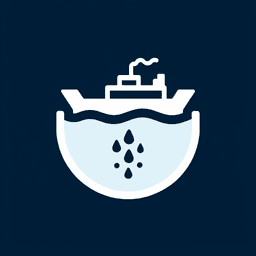
Bilge: Definition, Meaning, and Examples
January 16, 2025
Bilge
The term "bilge" refers to the lowest compartment on a ship or boat, where the two sides meet at the bottom. This area is crucial in maritime operations as it collects excess water that may enter the hull due to leaks, rain, or waves. The bilge is an essential component of a vessel's design, ensuring that water does not accumulate to levels that could affect the ship's stability and buoyancy.
Bilge water, which is the water that collects in this area, can contain oil, grease, and other contaminants, making it important for sailors to manage and dispose of it properly to prevent environmental pollution. Ships are equipped with bilge pumps to remove this water, maintaining the vessel's safety and operational efficiency.
Regular maintenance and inspection of the bilge area are vital for maritime safety. Sailors must ensure that bilge pumps are functioning correctly and that there are no blockages or leaks that could compromise the vessel's integrity. Understanding the role and maintenance of the bilge is fundamental for anyone involved in maritime activities.
Understanding Bilge in Maritime Context
What is Marine Bilge?
The bilge is the lowest compartment on a ship, located below the waterline, where the two sides of the hull meet at the keel. This area is crucial for collecting excess water that may enter the ship, ensuring it does not affect the vessel's buoyancy and stability. The term 'bilge' is derived from the old Norse word 'Bylgja', meaning 'to bulge'.
What Does It Mean When a Ship is Bilged?
When a ship is said to be 'bilged', it refers to a situation where the vessel has sustained damage to its bilge area, often resulting in water ingress. This can occur if the ship runs aground or collides with an object, causing a breach in the hull at the bilge. Such damage can compromise the ship's integrity and requires immediate attention to prevent sinking.
What Part of the Ship is the Bilge?
The bilge is the lowest part of a ship's hull, where the bottom curves up to meet the sides. It is designed to collect water that may enter the ship through leaks or condensation. This water is known as bilge water and is typically pumped out using bilge pumps to maintain the ship's balance and prevent flooding.
Types of Bilge Pumps
There are several types of bilge pumps used in maritime vessels, including:
- Centrifugal Pumps: These are commonly used due to their efficiency in moving large volumes of water quickly.
- Diaphragm Pumps: Known for their ability to handle debris-laden water without clogging.
- Rubber Lobe Pumps: These are less common but effective in specific applications where gentle handling of water is required.
Importance of Bilge Management
Effective bilge management is essential for maintaining a ship's safety and environmental compliance. Bilge water often contains oil, chemicals, and other pollutants, making it crucial to manage and dispose of it properly to prevent environmental contamination. Regular maintenance of bilge systems and adherence to maritime regulations are vital for safe and efficient ship operations.




